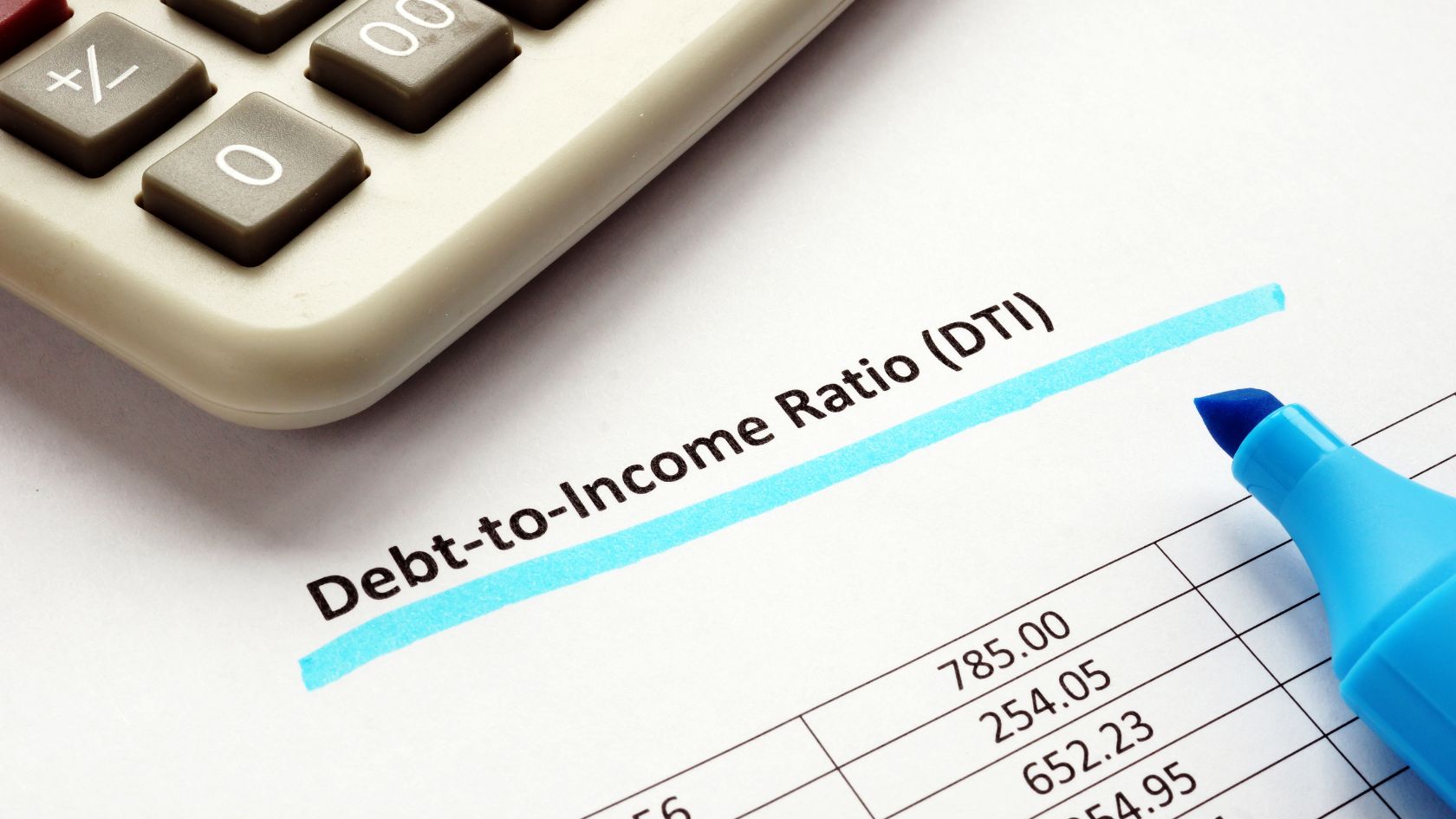Lenders check several factors, including the debt to income ratio, to determine whether a person qualifies for a loan. Debt-to-Income ratio (DTI) is the percentage of a borrower’s income that they must use monthly to pay off their debt. This ratio is an indicator of an individual’s financial health. If it’s too high, it means that a lender will find you too risky to lend money to, and a low percentage shows that you have a healthy financial position and your likelihood of defaulting on a loan is low.


What is it?
Lenders use your debt-to-income ratio or DTI to compare your current debt to your income. To get the figure, you must add all the debt obligations you pay each month, including your credit card debts, mortgage loans, car loans, credit cards, and monthly loan installments. Then divide the total by your monthly income and multiply it by 100 to get the percentage. For example, if your total debt obligations are $10,000 and your monthly income is $50,000, you have a DTI of 20%.
When the DTI is too big, the lender will view you as riskier since you will have little money left to survive on after paying your monthly debt obligations, and you are more likely to default on the loan, meaning you might fail to make payments on the loan you want to get from them.
The importance of DTI
A DTI gives lenders a better picture of your debt than your budget and income. However, analyzing a possible borrower’s current debt is not sufficient. Determining how much of a person’s monthly income is already committed to loans and whether the amount left can comfortably finance a new boat loan is essential.
What is the ideal DTI?
There is no one specific figure that every lender checks for when calculating a potential borrower’s DTI. Every lender decides their right DTI and other requirements like the principal and credit scores. Some lenders set a high DTI, and others low. The acceptable DTI also depends on the item you plan to buy and whether you will use collateral for the loan. For instance, a home mortgage lender can accept a high DTI while a personal loan lender might refuse because if you default, the former can seize the property and recover their money. The lender might have more stringent requirements for unsecured loans such as personal or student loans.
Even though there is no actual DTI that all lenders use to determine a borrower’s eligibility, most lenders prefer to issue loans to a person with a DTI of less than 35% or up to 45% thereabout. You can still qualify for a boat loan with a higher DTI than this range. However, you should anticipate that your loan terms will be a bit unfavorable. For example, you might be given a shorter loan period, a more significant down payment, or be required to have a higher credit score. The opposite is true; with a lower DTI, lenders might give you low-interest rates, a small down payment, and an extended loan term.
Boat Loan DTI
In most cases, many boat lenders prefer you to have a DTI of not more than 45%. Remember that most lenders will also consider what your DTI will become after taking a new boat loan.
You can find a calculator online and use it to calculate your debt so you have an idea of your debt-to-income ratio. This will help you decide whether a boat loan is the right option.
Can you reduce your DTI?
If you are about to apply for a boat loan or are not getting anywhere with finding a lender, rest assured that all is not lost. There are tactics you can use to lower your debt to income ratio. If you reduce the DTI percentage, you will increase your chances of qualifying for a boat loan. Do the following to achieve this goal:
Earn more
Multiply your income because it’s one of the figures used to calculate your DTI ratio. Find ways to increase your monthly income, such as doing an extra job, asking your employer to increase your salary, or starting a side hustle. Another effective method of increasing your income is to find a co-borrower. Their income will also be included in the calculations, so it could help you get a loan with better terms. Just make sure the cosigner doesn’t have many debts. Otherwise, bringing them on board would not help your situation.
Pay off some of your debt
Like increasing your income, paying off debt will reduce your DTI. If you have additional money somewhere or save some money, clear one or two loans. This will reduce the total monthly payment and reduce your DTI.
Refinance your current loans to reduce your monthly payments
Another way to reduce your debt to income ratio is to reduce the current monthly costs by increasing your payment terms or lowering your interest rates. You can achieve this by taking a consolidation loan, a balance transfer, or a refinance. This is a great option when you cannot use the above two strategies.
Conclusion
Debt-to-income is one of the ratios that lenders use when determining whether a loan applicant can qualify for a particular loan. Marine lenders also use this ratio when trying to see whether lending to a specific person is okay or too risky. The greater the percentage, the higher the possibility that the potential borrower won’t be able to pay off the new boat loan. The lower the ratio, the higher the chance the potential borrower has a healthy financial position, and lending them money is less risky. Fortunately, if you want to get a boat loan, you can do something to improve your DTI, such as increasing your income, reducing your debt, and refinancing or consolidating your loan to reduce your monthly payments.




